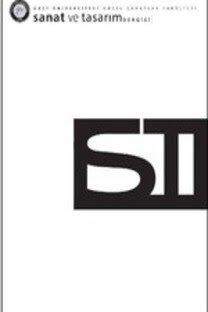TÜRKİYE'DE ÖZEL TİYATROLARA DEVLET YARDIMI: AMPİRİK BİR ANALİZ
Kültüre ve sanata yönelik üretimin, ilgi ve talebin artmasında devletin rolünün ne olması gerektiğine ilişkin tartışmalar giderek önem kazanmaktadır. Bir sanat formu olarak tiyatronun Türkiye gibi devlet eliyle de sunumunun yapıldığı ülkelerde özel tiyatrolara verilen destekler, günümüzde önemini artıran ve gelecekte daha da önem kazanacak olan kültür sektörünün gelişimi açısından büyük öneme sahiptir.
Bu çalışmada, Türkiye’de özel tiyatrolara yapılan devlet yardımlarına ilişkin 2000’li yıllar için genel bir değerlendirme yapılmıştır. Konu ele alınırken, Devlet Tiyatroları (DT) ve özel tiyatroların karşılaştırmalı bir şekilde analiz edilmesine önem verilmiştir. Bu karşılaştırmada; “oyun sayıları”, “temsil ve seyirci sayıları” gibi istatistikler kullanılmıştır. Çalışmada Güzel Sanatlar Genel Müdürlüğü’nün özel tiyatrolara yaptığı yardımlara ilişkin veriler kullanılarak, yardım miktarlarını etkileyen faktörlerin neler olabileceğini belirlemeye yönelik regresyon analizi yapılmıştır. Regresyon analizi sonucunda, Türkiye’de özel tiyatroların hem seyircilerini hem de temsil sayılarını oransal olarak artırmış olmalarına karşın, devletten aldıkları mali destek veya sübvansiyon miktarını artıramadıkları bulgusuna ulaşılmıştır.
Anahtar Kelimeler:
Devlet Tiyatroları, Özel Tiyatrolar, Devlet Desteği, Kültür ve Sanat Ekonomisi, Türkiye
STATE SUBSIDY TO PRIVATE THEATERS IN TURKEY: AN EMPIRICAL ANALYSIS
The debates about the role of governments or states to increase the production, interest and demand for culture and art have been getting important. Subsidies to private theatres, as an art form which is produced and subsidized by governments in countries like Turkey, are important for the development of cultural sector which is already important and will be more important in the future.
This paper makes an overall assessment of government subsidies to private theatre in the 2000s. Turkish State Theatres (DT) and private theaters were analyzed comparatively in terms of number of plays, performances, and trends in the audience. In order to determine the factors that affect the amount of subsidies, a regression analysis is conducted by using the data on the subsidies provided by the General Directorate of Fine Arts to private theaters. As a result of the analysis, it was concluded that although private theaters increased both the audience and the number of performances proportionally, they could not increase their share of subsidy from the state.
Keywords:
State Theatres, Private Theatres, Government Subsidy, Economics of Art and Culture, Turkey,
___
- • Ali, C. (2016). “The Merits of Merit Goods: Local Journalism and Public Policy in a Time of Austerity”, Journal of Information Policy, Vol. 6: 105-128.
- • Akdede, S. H. (2014). Devlet-Sanat İlişkisi: Sanatın Politik Ekonomisi, (Ankara: Efil Yayınevi).
- • Baumol, W.J. ve Bowen W. G. (1965). “On the Performing Arts: The Anatomy of Their Economic Problems”. American Economic Review, 55: 495-502.
- • Baumol, W.J. ve Bowen W. G. (1966). “Performing Arts-The Economic Dilemma”, (The Twentieth Century Fund. New York).
- • Clawson, M.ve Knetsch J.L. (1966). Economics of Outdoor Recreation, Johns Hopkins University, (Baltimore, MD).
- • Council of Europe (1991). Culturel Policy in France (Strasbourg), ISBN 92-871-1923-6.
- • Cwi, D. (1980). “Public support of The Arts: Three Arguments Examined”, Journal of Cultural Economics, December, Vol.4, No.2: 39-62.
- • Forrest, D., Grime, K. ve Woods, R. (2000). “Is It Worth Subsidising Regional Repertory Theatre?” Oxford Economic Papers, 52, No. 2 (Apr.,): 381-397.
- • Galecka, M. ve Smolny, K. (2019). “Criteria for the Optimal Financing Model of Public Theatres”, Review of Economic Perspectives, Vol. 19, Issue 2: 119–136.
- • Garboua, L. L.ve Montmarquette, C. (2002). The Demand for The Arts, http://histsciences.univ-paris1.fr/pub/mse/ cahiers2002/Bla02044.pdf (07.09.2019).
- • Hetherington, S. (2015). The Interdependence of Public and Private Finance in British Theatre, Published by Arts Council England, https://www.artscouncil.org.uk/sites/default/files/download-file/IPPF_report_final.pdf (11.07.2019).
- • Kleppe, B. (2016). “The Autonomous World Reversed: Comparing Liberal Policy and Autonomy in the Performing Arts”, International Journal of Cultural Policy, 1-19.
- • Kleppe, B. (2017). “Regulating Autonomy Theatre Policy and Theatre Management in Three European Countries”, University College of Southeast Norway Faculty of Humanities, Sports and Educational Science Doctoral Dissertation No.22, https:// openarchive.usn.no/usn-xmlui/handle/11250/2458452 (07.09.2019).
- • Last, A. C. ve Wetzel, H. (2011). “Baumol’s Cost Disease, Efficiency, and Productivity in the Performing Arts: An Analysis of German Public Theaters”, Journal of Cultural Economics, 35(3): 185-201.
- • Løyland, K. ve Ringstad, V. (2007). “Norwegian Subsidized Theatres – Failure or Future?”, International Journal of Cultural Policy, 13:4, 407-417, DOI: 10.1080/10286630701683334.
- • O’Hagan, J. ve Neligan, A. (2005). “State Subsidies and Repertoire Conventionality in the Non-Profit English Theatre Sector: An Econometric Analysis”, Journal of Cultural Economics, 29(1): 35-57.
- • Suominen, S. (2018). “On the Optimal Level of Theatre Subsidies”,https://cpb-ap-se2.wpmucdn.com/sites.rmit.edu.au/ dist/1/19/files/2018/06/6D-Seppo-14quekl.pdf (10.07.2019).
- • Pflieger, S. (2013). “Financing the Arts in France”, ENCATC Journal Of Cultural Management and Policy, Volume 3, Issue 1: 3-14.
- • Taalas, M. (1997). “Generalised Cost Functions for Producers of Performing Arts – Allocative Inefficiencies and Scale Economies in Theatres”, Journal of Cultural Economics, 21: 335-353.
- • Werck, K., Stuldtjes, M.G.P ve Heyndels, B. (2008). “Budgetary Constraints and Programmatic Choices by Flemish Subsidized Theatres”, Applied Economics, February, 40 (18): 2369-2379.
- • Zieba, M. (2009). “Full-income and Price Elasticities of Demand for German Public Theatre”, Journal of Cultural Economics, 33(2): 85-108.
- • Zülfüoğlu, Ö. ve Soydan Yılmaz, N.T. (2019). “Topluma Hizmet Uygulamaları Dersinin Maliye Bölümü Öğrencilerinin Erdemli Mal ve Hizmetlere Bakış Açısı Üzerindeki Etkisi”, Marmara Üniversitesi İktisadi ve İdari Bilimler Dergisi, Cilt: 41, Sayı: 1, Haziran, ISSN: 2149-1844, ss/pp. 278-296 DOI: 10.14780/muiibd.582323.
- ISSN: 1308-2264
- Yayın Aralığı: Yılda 2 Sayı
- Başlangıç: 2015
- Yayıncı: Ankara Hacı Bayram Veli Üniversitesi
Sayıdaki Diğer Makaleler
TÜRKİYE'DE HAREKETLİ AFİŞİN ONTOLOJİSİ
FRANK LLOYD WRIGHT'IN MEKAN ANLAYIŞI: FREDERICK ROBIE EVİ ÜZERİNDEN BİR OKUMA
SÜRDÜRÜLEBİLİR TASARIM YAKLAŞIMI AÇISINDAN BİYOPLASTİKLERİN İNCELENMESİ
GÖRSEL OKUMA VE TİPOGRAFİK AÇILIMLARI
Hande ÖZGELDİ BÜYÜKTOPBAŞ, Tevfik Fikret UÇAR
İYİ KOPYANIN SAVUNMASI: ZANAATLER VE ORİJİNALLİK ÜZERİNE BİR TARTIŞMA
YAZI TASARIMINI ÖNEMSEYEN VE SAHİP ÇIKAN BİR KUŞAĞIN TEMSİLCİSİ: MUSTAFA EREN
''SOYLULAŞTIRMA'' KAVRAMI ÜZERİNDEN ÜRETİM YAPAN SANATÇILARA YÖNELİK BİR İNCELEME
MODA TASARIMI ÖĞRENCİLERİNİN TASARIM BİLİŞ TÜRLERİNİN BELİRLENMESİ
